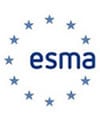European regulators have delayed the introduction of frontloading requirements for the buy-side to five months after the regulatory technical standards (RTS) of new central clearing rules come into force for interest rate swaps.
The decision was made by the European Commission in response to the European Securities and Markets Authorities’ (ESMA) technical standards, and took into account widespread market concern over the contentious rule.
Frontloading requires firms to retrospectively clear existing trades once the obligation comes into force.
With the RTS potentially coming into effect early next year, buy-side firms would have been subject to the frontloading requirements with little time to prepare, despite their own mandatory clearing deadline 12 months away from when the rules are implemented.
The European Commission has now said the start date for frontloading for buy-side firms will be delayed by five months.
ESMA said the decision will “provide those counterparties with sufficient time to implement the necessary arrangements to calculate the threshold and after that, implement the necessary arrangements for frontloading”.
Category one firms, which captures clearing firms, such as banks and swap dealers, have also been given a two month extension.
“The Commission letter is very helpful as Category 1 and 2 entities now have a little bit longer to establish their clearing arrangements before being subject to frontloading,” said Deepak Sitlani, derivatives partner at law firm Linklaters.
“A number of non-clearing members have been trying to push through negotiation of their clearing documents and it was always going to be a push to get everything in place before February.
“Whilst the existence of frontloading still does not sit well with the phase-in periods for the clearing obligation, this is definitely a positive step.”
The final regulatory technical standards mandate that four interest rate classes denominated in four currencies be subjected to the new rules. The instruments were all deemed liquid enough to be transitioned through clearing houses.
